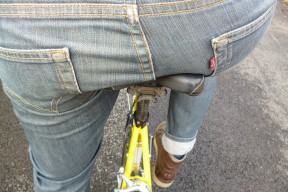 Smoking cigarettes is detrimental to human cells. Not only those you might expect in the mouth and throat but also the skin on your buttocks.
Smoking cigarettes is detrimental to human cells. Not only those you might expect in the mouth and throat but also the skin on your buttocks.
I learned this at the Lifelong Health and Wellbeing (LLHW) conference hosted by University College London (6-8 November 2013). It covered a huge variety of topics from the fields of biology to urban planning. The news about the impact of smoking naturally got me thinking whether any work has been done to investigate the effects of cycling on buttock health and aesthetics and could this be more evident in cities with more cycling?!
Back within my domain of urban design, Nick Tyler’s talk at the conference stood out. It asked the simple question ‘What are cities for?’ in order to help think about the contribution of the transport environment to improving overall quality of life for older people. His team at UCL, along with researchers from Universidad de los Andes, investigated how people interact with their immediate environment in many cities across the world. He highlighted how Bogota, the capital of Colombia, and Medellin, the second largest city, have become renowned for their progressive transport policies (see the recent article on Happy Cities). This led the team to develop five principles that need to be applied across the whole city to enhance wellbeing: the courteous city; the active and inclusive city; the liveable city; the city as public space; and the city that evolves. These principles have formed the basis of a proposed National Strategy for Transport in low carbon cities for Colombia.
Nick explained how this view of the city can stop people thinking and acting only within their own sectors – for example broadening out from established disciplines such as transport planning to think about health and wellbeing. I would say this sort of cross-sectorial thinking may come more naturally to Urban Designers, perhaps I would do wouldn’t I, and isn’t a totally new idea – Nick did acknowledge the work of Lewis Mumford and Peter Hall. But the ‘five-cities’ approach does seem a striking way of articulating and sharing what types of places we want our cities to be.
We don’t have much influence over our basic biology, which configures who we are, and arguably what we do. But a shared vision of towns and cities that are planned holistically to enable courteous cycling amongst all age groups seems like a good way of trying to extend health and improve wellbeing in later life as well as making cities more liveable for all. Better that we develop cities encouraging healthy buttocks rather than aged-before-time buttocks. Wouldn’t you agree?

Leave a Reply